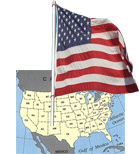|
Today American culture often sets the pace in modern style. For much of its early history, however, the United States was considered culturally provincial and its arts second-rate, especially in painting and literature, where European artists defined quality and form. American artists often took their cues from European literary salons and art schools, and cultured Americans traveled to Europe to become educated. In the late 18th century, some American artists produced high-quality art, such as the paintings of John Singleton Copley and Gilbert Charles Stuart and the silver work of Paul Revere. However, wealthy Americans who collected art in the 19th century still bought works by European masters and acquired European decorative arts—porcelain, silver, and antique furniture. They then ventured further afield seeking more exotic decor, especially items from China and Japan. By acquiring foreign works, wealthy Americans were able to obtain the status inherent in a long historical tradition, which the United States lacked. Americans such as Isabella Stewart Gardner and Henry Clay Frick amassed extensive personal collections, which overwhelmingly emphasized non-American arts.
In literature, some 19th-century American writers believed that only the refined manners and perceptions associated with the European upper classes could produce truly great literary themes. These writers, notably Henry James and Edith Wharton, often set their novels in the crosswinds of European and American cultural contact. Britain especially served as the touchstone for culture and quality because of its role in America's history and the links of language and political institutions. Throughout the 19th century, Americans read and imitated British poetry and novels, such as those written by Sir Walter Scott and Charles Dickens.
American culture first developed a unique American voice during the 19th century. This voice included a cultural identity that was strongly connected to nature and to a divine mission. The new American voice had liberating effects on how the culture was perceived, by Americans and by others. Writers Ralph Waldo Emerson and Henry David Thoreau proposed that the American character was deeply individualistic and connected to natural and spiritual sources rather than to the conventions of social life. Many of the 19th century’s most notable figures of American literature—Herman Melville, Emily Dickinson, and Mark Twain—also influenced this tradition. The poetry of Walt Whitman, perhaps above all, spoke in a distinctly American voice about people’s relation to one another, and described American freedom, diversity, and equality with fervor.
Landscape painting in the United States during the 19th century vividly captured the unique American cultural identity with its emphasis on the natural environment. This was evident in the huge canvases set in the West by Albert Bierstadt and the more intimate paintings of Thomas Cole. These paintings, which were part of the Hudson River School, were often enveloped in a radiant light suggesting a special connection to spiritual sources. But very little of this American culture moved beyond the United States to influence art trends elsewhere. American popular culture, including craft traditions such as quilting or local folk music forged by Appalachian farmers or former African slaves, remained largely local.
This sense of the special importance of nature for American identity led Americans in the late 19th century to become increasingly concerned that urban life and industrial products were overwhelming the natural environment. Their concern led for calls to preserve areas that had not been developed. Naturalists such as John Muir were pivotal in establishing the first national parks and preserving scenic areas of the American West. By the early 20th century, many Americans supported the drive to preserve wilderness and the desire to make the great outdoors available to everyone.
|
